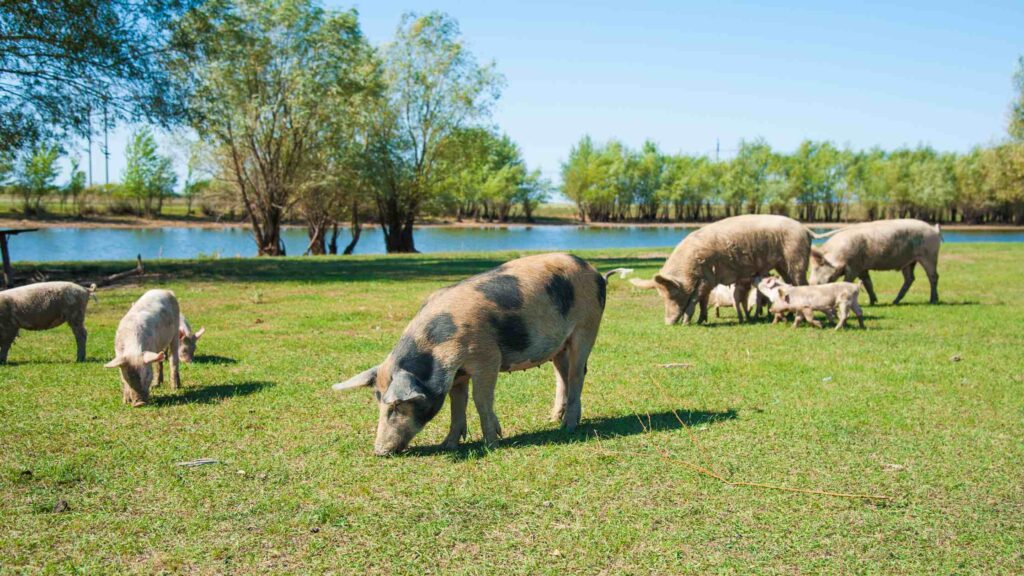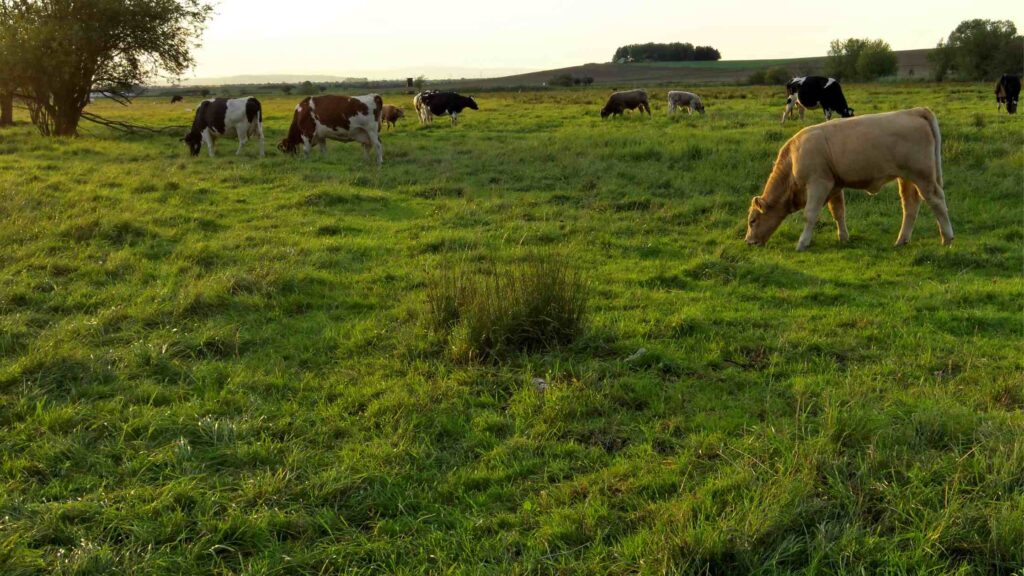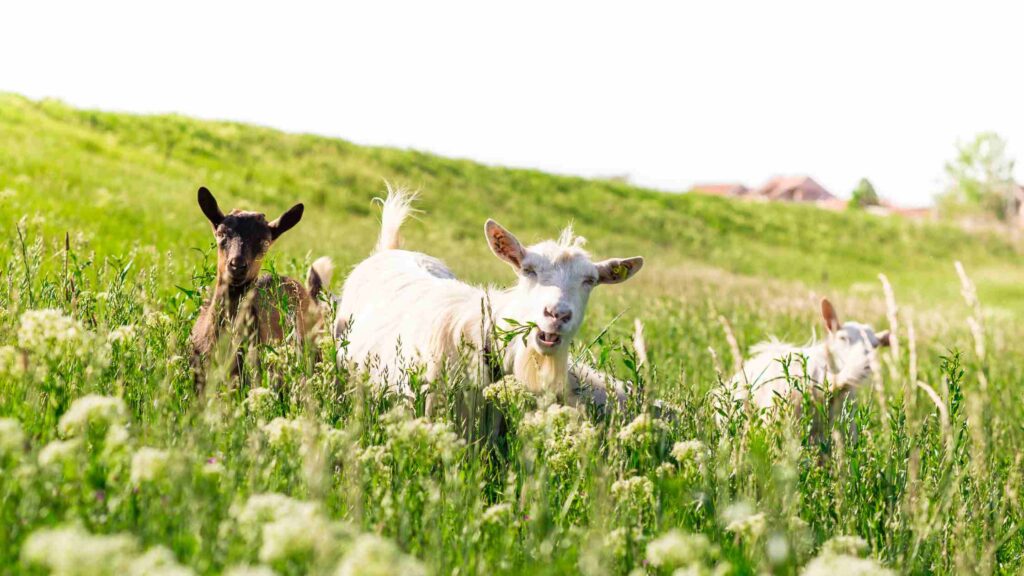In an era where sustainable and regenerative farming practices are gaining momentum, Joel Salatin’s innovative methods offer a blueprint for turning 5 acres of land into a lucrative pig farming operation. By embracing regenerative principles and holistic management techniques, farmers can not only generate a substantial income but also contribute to environmental restoration and soil health.

Understanding Regenerative Pig Farming
Regenerative pig farming goes beyond traditional methods by prioritizing soil health, biodiversity, and animal welfare. Joel Salatin, a pioneer in regenerative agriculture, advocates for rotational grazing, holistic land management, and ethical livestock practices. By mimicking natural ecosystems and harnessing the symbiotic relationships between plants, animals, and soil, farmers can create sustainable and profitable farming systems.
- Rotational Grazing: Pigs are rotated through a series of paddocks or pastures on a regular basis to prevent overgrazing, promote soil health, and maximize forage utilization. This rotational grazing approach mimics natural herd movements and allows vegetation to recover between grazing periods.
- Integrated Farming Systems: Pigs are integrated into diverse farming systems that include other livestock species, crops, and pasture vegetation. By rotating pigs with other animals such as chickens or cattle and incorporating cover crops or perennial forages, farmers can enhance soil fertility, reduce pests, and improve overall farm productivity.
- Pasture-Raised Management: Pigs have access to fresh pasture, sunlight, and space to exhibit natural behaviors such as rooting and foraging. Pasture-raised management systems prioritize animal welfare and environmental stewardship, resulting in healthier animals and high-quality pork products.
- Minimal Input, Maximum Output: Regenerative pig farming minimizes reliance on external inputs such as synthetic fertilizers, pesticides, and antibiotics. Instead, it focuses on leveraging natural processes and biological diversity to enhance soil fertility, control pests, and maintain animal health without compromising long-term sustainability.
- Ethical and Sustainable Practices: Regenerative pig farming emphasizes ethical treatment of animals, responsible land stewardship, and sustainable farming practices. By prioritizing animal welfare, minimizing environmental impact, and promoting biodiversity, farmers can create a regenerative farming system that benefits both people and the planet.
If you’re more of a visual learner, check out this YouTube video about it! I know the title says “20 acres,” but when you watch the first part, you will see how they do it with just 5 acres.
How to make a good living off pig farming
Step 1: Land Assessment and Planning
- Evaluate Soil Health: Conduct soil tests to assess fertility, pH levels, and nutrient content. Implement soil-building practices such as composting, cover cropping, and rotational grazing to improve soil structure and fertility.
- Design Grazing System: Divide the land into smaller paddocks using temporary fencing or electric fencing. Plan rotational grazing patterns to prevent overgrazing, promote forage growth, and enhance soil health.
- Consider Infrastructure Needs: Identify infrastructure requirements such as shelters, water sources, and handling facilities. Design an efficient layout that maximizes space utilization and facilitates animal management.
Step 2: Selecting Breeds and Stocking
- Choose Heritage Breeds: Select heritage pig breeds known for their hardiness, adaptability, and foraging abilities. Breeds such as Gloucestershire Old Spots, Tamworths, or Red Wattles thrive in outdoor environments and produce high-quality pork.
- Determine Stocking Density: Calculate stocking rates based on available forage, land carrying capacity, and desired impact on vegetation. Avoid overcrowding to prevent soil compaction and maintain animal welfare standards.
Step 3: Implementing Rotational Grazing
- Establish Grazing Rotation: Develop a rotational grazing plan that divides the land into paddocks and rotates pigs through them at regular intervals. Monitor vegetation growth and adjust grazing rotations based on forage availability and weather conditions.
- Utilize Multi-Species Grazing: Integrate pigs with other livestock such as chickens, cattle, or sheep to maximize pasture utilization and nutrient cycling. Rotate animals together to optimize grazing patterns and enhance soil fertility.
Step 4: Feeding and Nutrition Management
- Supplemental Feeding: Provide pigs with access to pasture, forage, and supplemental feed to meet their nutritional needs. Balance feed rations to ensure proper growth, development, and overall health.
- Utilize Natural Forage: Encourage pigs to forage for roots, tubers, and insects in pasture paddocks. Supplement forage with high-quality feed sources such as non-GMO grains, legumes, and locally sourced supplements.
Step 5: Value-Added Products and Direct Marketing
- Diversify Product Offerings: Explore value-added products such as sausages, bacon, hams, and charcuterie to maximize revenue potential. Process pork products on-site or partner with local processors to create unique and marketable offerings.
- Direct Marketing Channels: Establish direct marketing channels such as farmers’ markets, farm stands, CSA programs, and online sales platforms to connect with consumers. Build relationships with customers, share your farm’s story, and highlight the benefits of regenerative farming practices.
Step 6: Monitoring and Adaptation
- Monitor Grazing Patterns: Regularly assess pasture condition, forage growth, and animal health indicators. Adjust grazing rotations, stocking densities, and feeding strategies based on seasonal variations and feedback from land and livestock.
- Continuous Improvement: Embrace a mindset of continuous improvement and learning. Attend workshops, conferences, and networking events to stay updated on regenerative farming practices and industry trends.

How long should you let land rest before grazing pigs again?
The length of time needed to let land rest after being grazed by pigs before allowing them to graze again depends on several factors, including soil health, forage growth, and weather conditions. As a general guideline, it’s recommended to allow pastures to rest for at least 30 to 60 days after being grazed by pigs. However, this timeframe can vary based on the following considerations:
- Forage Recovery: Ensure that the pasture vegetation has had sufficient time to regrow and recover from grazing pressure. Monitor the growth of grasses, legumes, and other forage species to determine when they are ready to be grazed again.
- Soil Health: Consider the impact of grazing on soil health and fertility. Allowing land to rest enables soil microbes to regenerate, organic matter to decompose, and nutrient cycling to occur. Soil tests can provide insights into soil health indicators and help determine the optimal rest period.
- Weather Conditions: Take into account seasonal variations and weather patterns when planning grazing rotations. During periods of active growth, such as spring and early summer, pastures may recover more quickly and be ready for grazing sooner. Conversely, in periods of drought or extreme weather, additional rest may be necessary to avoid overgrazing and soil degradation.
- Grazing Intensity: Adjust the length of rest periods based on the intensity of grazing pressure and stocking densities. Higher stocking densities and longer grazing periods may require extended rest periods to allow for adequate pasture recovery.
- Pasture Management Goals: Consider the overall goals of pasture management, including soil conservation, forage production, and animal health. Tailor rest periods to align with these objectives and prioritize long-term sustainability and regenerative outcomes.
Ultimately, the optimal rest period for land grazed by pigs will vary depending on the specific conditions and management practices employed on the farm. Regular monitoring of pasture health, soil conditions, and animal performance can help inform grazing decisions and ensure that land is rested adequately to support sustainable and regenerative farming practices.

How it works with other animals
The regenerative grazing method employed with pigs can also be adapted to work effectively with other livestock species, such as cattle, sheep, and poultry. This approach, often referred to as multi-species or integrated grazing, harnesses the natural behaviors and complementary grazing patterns of different animals to improve pasture health, soil fertility, and overall farm productivity. Here’s how this method can work with other animals:
- Cattle: Cattle are well-suited for grazing larger areas of pasture and can complement the foraging behaviors of pigs. Integrating cattle into rotational grazing systems alongside pigs can help control vegetation growth, promote nutrient cycling, and improve pasture health. Cattle, with their larger size and different grazing preferences, can graze taller grasses and rougher vegetation, while pigs focus on rooting and consuming smaller plants and insects.
- Sheep: Sheep are efficient grazers and can be integrated into multi-species grazing systems to further diversify pasture utilization. Like cattle, sheep have different grazing preferences from pigs and can help manage vegetation growth in pasture paddocks. Rotating sheep with pigs can optimize forage utilization, reduce weed pressure, and enhance soil fertility through nutrient deposition and trampling.
- Poultry: Chickens and ducks can play a valuable role in integrated grazing systems by following larger livestock, such as cattle or pigs, and foraging for insects, grubs, and seeds in pasture paddocks. This practice, known as “pasture-following poultry,” helps control pests, improve soil health, and increase nutrient cycling. Additionally, poultry can provide natural fertilizer through their droppings, further enhancing soil fertility and pasture productivity.
- Complementary Grazing Patterns: Each species of livestock has unique grazing behaviors and preferences, which can be harnessed to create a diverse and resilient grazing system. By rotating different animal species through pasture paddocks in sequence, farmers can optimize forage utilization, minimize overgrazing, and promote regenerative outcomes. For example, cattle may graze taller grasses first, followed by pigs for rooting and disturbance, and then poultry for insect control and nutrient cycling.
- Enhanced Biodiversity: Integrating multiple species of livestock into grazing systems can enhance biodiversity and ecosystem resilience. By mimicking natural grazing patterns and interactions between animals and vegetation, farmers can create dynamic and productive agricultural ecosystems that support a wide range of plant and animal species.
Overall, the regenerative grazing method used with pigs can be adapted and expanded to include other livestock species, resulting in synergistic benefits for pasture health, soil fertility, and farm sustainability. By embracing multi-species grazing systems, farmers can harness the natural behaviors of animals to create resilient and regenerative farming operations that produce high-quality food while promoting environmental stewardship.
Conclusion
Regenerative pig farming offers a sustainable and profitable model for utilizing 5 acres of land to its fullest potential. By following Joel Salatin’s principles of holistic management, rotational grazing, and direct marketing, farmers can create thriving agricultural systems that regenerate soil health, support biodiversity, and generate a substantial income. With careful planning, innovative thinking, and a commitment to environmental stewardship, regenerative pig farming represents a promising opportunity for small-scale farmers to prosper while fostering a healthier planet for future generations.

